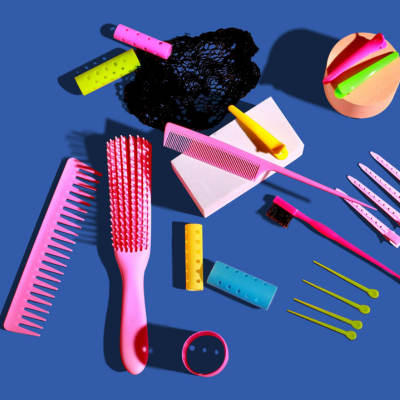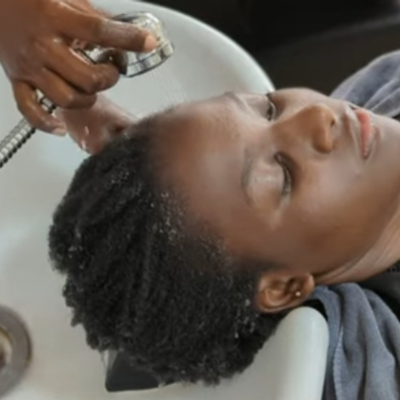- Support 24/7
- +1 (480) 468-4543
- livara@mylivara.com
How To Remove Faux Locs Without Damage: A Visual Guide
Does Gel Cause Hair Damage?
January 4, 2024What Do Hot Oil Treatments Do For Natural Hair?
January 6, 2024The term faux locs is short for “false dreadlocks,” and it’s become a popular hairstyle option for people that want to enjoy the aesthetic of dreadlocks without the long-term commitment of growing and locking natural hair. Like any other protective style, faux locs tuck away your delicate hair ends and shield your hair from environmental stressors, as well as the need to daily manipulate it.
Faux locs are usually installed by wrapping synthetic hair around small braided or twisted sections of your natural hair to create the appearance of locs. Pre-made faux locs can also be crocheted into your natural hair, however, the wrap method remains the most popular one. The process of uninstalling these locs can come with a lot of breakage if done wrongly, so we’ve come up with a visual guide to help prevent breakage as you unravel them.
Step 1: Let them free and cut them short
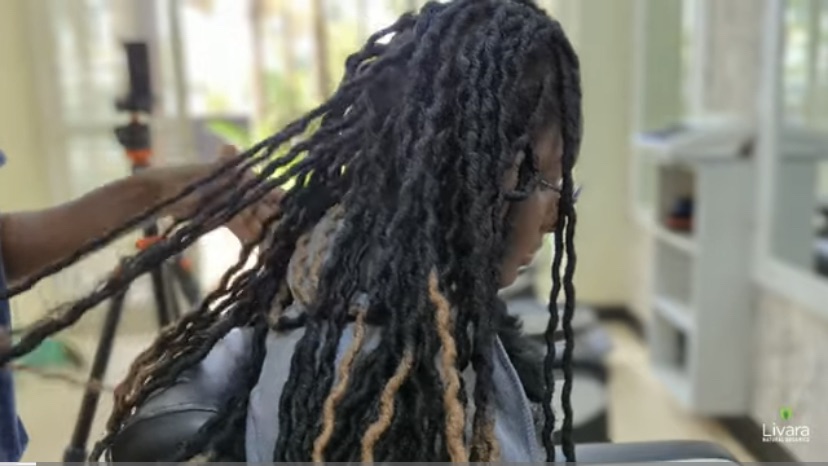
Start by letting the faux locs free from any hair tie you were using to hold them in place. After that, use scissors to cut them short. Usually, the added synthetic extensions used to make faux locs are much longer than your actual hair, so you can cut them short to save time, a safe distance from where you estimate your natural hair to reach. By cutting a safe distance from the actual length of your hair, there will be no chances of you cutting any new length off.
Step 2: Spray some water onto the hair
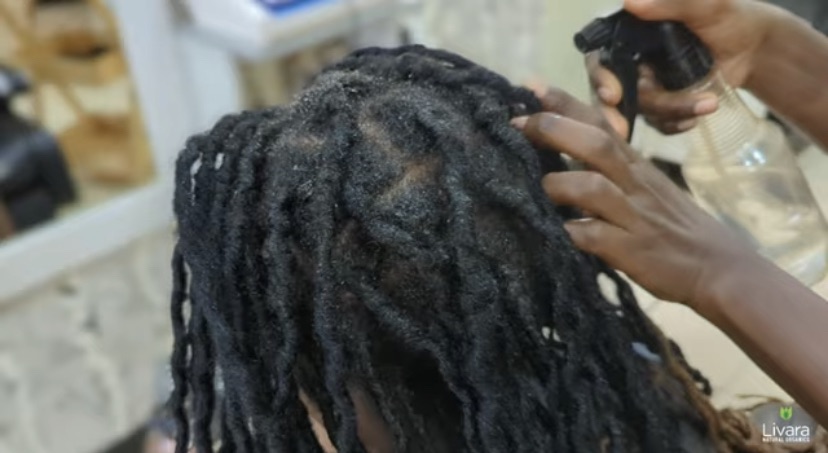
Water helps to soften the hair, making it easier to unplait and detangle. Fill a spray bottle with some water and use it to dampen the hair all over the head.
Step 3: Use scissors to cut the synthetic hair wrapping
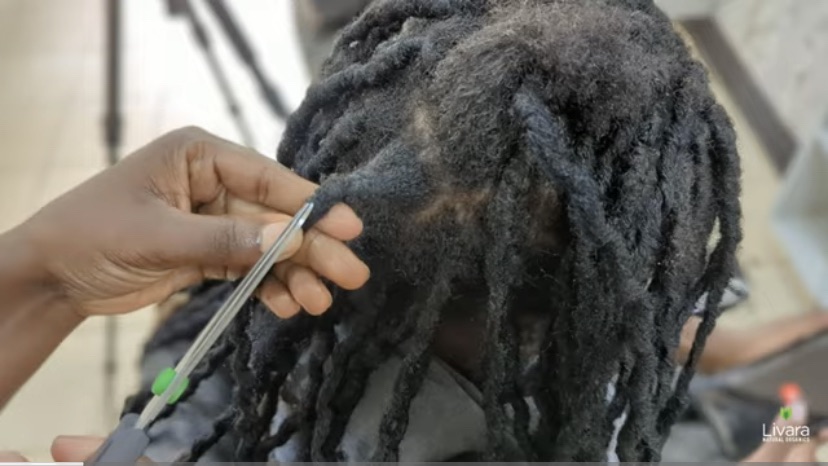
As explained earlier, faux locs are made by wrapping synthetic hair around your natural hair. To effectively remove this wrapping, you’ll have to use scissors to gently remove the synthetic hair. Use scissors to trim along the edges of the wrapping and gently start to unravel the synthetic hair.
This is a very delicate process, as if done carelessly, it may lead to you cutting off your own hair. We encourage you to ask someone to help you, especially for the rear faux locs you can’t see or reach properly.
Step 4: Unravel your natural hair

After unravelling the synthetic hair, go on to unplait the foundational braid or twist that was made in your natural hair. For this, we recommend using the end of a rattail comb for better efficiency.

Using your fingers is no problem anyway. Thereafter, use the other end of the rattail comb to gently run through the strands to prevent any knots and tangles from forming as you unplait the rest of the hair.
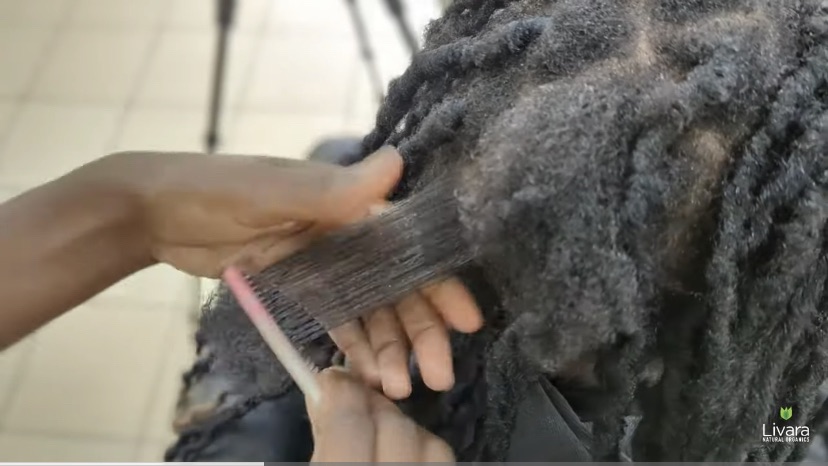
Run the comb through in swift, gentle movements to prevent any unnecessary hair loss.
Step 4: Apply conditioner to ease detangling

Like water, conditioner softens the strands, but to a greater extent. It contains ingredients that add slip to the hair, making it much easier to work your way through any knots and tangles.
Our Livara Tsavorite Booster Hair Conditioner is a rinse-out conditioner made specially for softening the hair and easing detangling. It’s got the best moisturizing ingredients for your hair, such as guava leaf extract, olive oil and shea butter. You can shop it here.

Spread the conditioner across the length of your hair strands. Note that the conditioner isn’t meant for the scalp, so don’t apply it there. Focus on the lengths of your hair strands and apply generous amounts to each sections to ease the whole detangling process.
After application, use a good detangling tool like a wide tooth comb, brush or even your fingers to gently detangle each section of hair. When you’re done detangling a section, form it into a twist to separate it from the rest, also to ease washing later on.
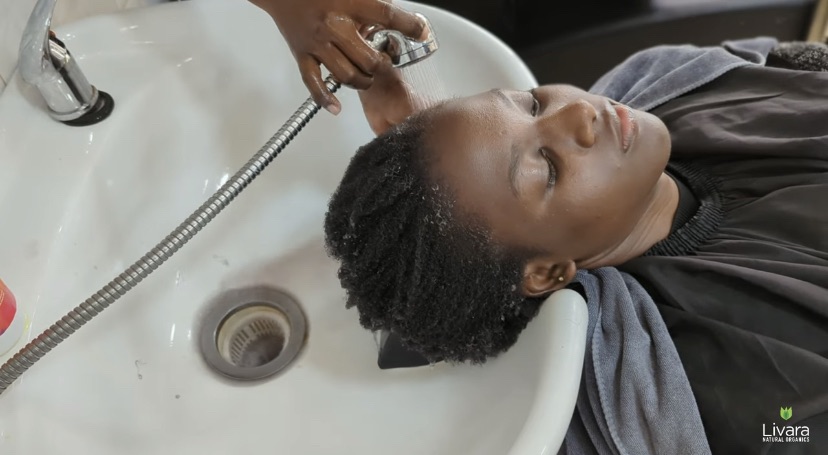
Wash out the conditioner and proceed shampoo as you always do. Don’t forget to still condition afterwards using a regular conditioner, deep conditioner or leave-in treatment. This is a crucial step for reviving moisture after shampooing as well as preventing any further formation of knots or tangles.
So there you have it. The easiest way to take down your faux locs without damage. For a closer look at any of these steps and other tips, check out our YouTube video: https://youtu.be/0W3x0tJPJ-w?feature=shared. Be sure to like, comment and subscribe!

